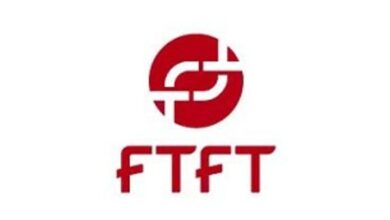How Mobile Application Development Transforms Fintech Services Accessibility


Fintech, or financial technology, refers to technological innovations used to improve and automate the delivery of financial services. The fintech sector has experienced explosive growth over the last decade, fundamentally transforming how consumers and businesses manage their finances.
Fintech companies utilize the latest advancements in mobile apps, blockchain, artificial intelligence, and big data analytics to offer services such as digital payments, online lending, robo-advisory, and crowdfunding, among many others. The global fintech market is estimated to reach over $309 billion by 2022, more than double its size in 2017.
A significant driving force behind fintech’s rise has been the ubiquity of mobile devices. Smartphones have become the preferred way for people to manage their finances on the go. Mobile apps provide convenience, instant access, and personalized services not possible through traditional financial institutions alone. As such, providers have invested heavily in mobile application development for fintech to deliver innovative financial solutions directly to users.
Benefits of Mobile Apps for Fintech
Mobile apps significantly benefit both fintech companies and their customers by enhancing accessibility and convenience. Some key benefits include:
Convenience and Ease of Use
Mobile apps allow users to access financial services anytime, anywhere, easily. Rather than visiting a bank or office, customers can instantly check balances, transfer funds, apply for loans, and more. Apps provide a streamlined experience with intuitive interfaces. Features like biometric login (fingerprint or facial recognition) further simplify use.
Personalization
Fintech apps leverage data and AI to provide personalized insights and recommendations. They can analyze spending patterns to alert users about unusual activity or suggest transferring funds to avoid overdrafts. Apps can also recommend content and services tailored to each user.
Security
Mobile fintech leverages the latest security protocols, such as encryption, tokenization, and biometric authentication. By storing sensitive data on users’ devices rather than centralized servers, apps minimize vulnerable entry points. Advanced identity verification and fraud monitoring provide additional safeguards.
Constant Connectivity
Unlike websites, fintech apps maintain constant connectivity. They can send instant notifications about account activity, deliver time-sensitive information, and enable on-the-go transactions. Real-time connectivity improves financial management.
In summary, mobile apps significantly enhance the accessibility and utility of fintech services for everyday users. Intuitive design, intelligent features, robust security, and always-on connectivity drive adoption across digital banking, investing, insurance, and more.
Key Mobile App Features
Mobile apps have transformed how consumers access and manage their finances through critical features like mobile payments, budgeting tools, investing platforms, and personal finance dashboards.
- Mobile Payments—Apps like Venmo, PayPal, Apple Pay, Google Pay, and Cash App have made peer-to-peer transactions seamless. Users can easily send or request money, pay bills, and make in-store purchases directly from their phones. These apps provide convenience, speed, and security.
- Budgeting and Expense Tracking – Apps like Mint, Personal Capital, and You Need A Budget (YNAB) help users manage their spending. They connect to bank accounts to automatically categorize transactions and provide insights into spending habits. Users can set budgets, track cash flow, and monitor financial goals.
- Investing Tools—Apps like Robinhood, Acorns, and Stash provide easy access to investing. Users can open brokerage accounts, buy stocks and ETFs commission-free, automate small regular investments, and manage their portfolios on the go. These tools make investing accessible to more consumers.
- Bank Account Dashboards—Traditional banks’ mobile apps provide account holders with dashboards to view balances, transaction histories, pending payments, and deposits in one place. Features like mobile check deposit and account alerts improve convenience and oversight.
- Personal Finance Management – Apps like Credit Karma provide free credit scores, reports, and insights for improvement. Others help consumers manage debt, find financial advisors, compare insurance rates or apply for loans. By aggregating financial data, these apps simplify personal finance management.
The key features offered through fintech apps significantly improve the accessibility and convenience of financial services for consumers. With intuitive design and automation, fintech apps enable users to manage their financial lives securely from anywhere at any time.
Improved Accessibility
Development companies such as https://www.sombrainc.com/services/software-modernization are helping fintech companies reach populations traditionally underserved by financial services. Smartphones have become ubiquitous, even among low-income groups and those in remote areas without access to physical bank branches. This presents an opportunity for fintechs to provide digital financial services to many who have never had a bank account.
Mobile apps allow users to access financial services regardless of geographic barriers. Rural populations far from cities can use fintech apps on their phones and gain access to services that were historically only available in urban areas. Apps help overcome issues like lack of transportation to a bank branch. Fintech mobile apps bring financial inclusion to many underserved groups.
Apps can also provide services to migrant workers who frequently move locations. Their financial accounts and services can move with them via mobile apps. Apps allow accessibility no matter where users are located, as long as they have a mobile signal. This reach expands financial inclusion in developing countries.
Fintech mobile apps also provide underserved populations with the chance to gain financial literacy. Well-designed apps include education on using financial services responsibly. They empower underserved groups with knowledge and tools to improve their economic standing.
User Adoption
The rise of mobile apps has led to widespread adoption of fintech services. Recent surveys show that over 50% of adults with bank accounts use mobile banking apps, and this percentage is even higher among younger demographics.
According to Pew Research Center data, around 70% of millennials use mobile banking. Gen Z adoption is also high, with 65% of 18-29 year olds banking by phone. The convenience and ease of managing finances through an app continue to drive increased usage across age groups.
There are also interesting variations based on income level. Higher-income adults with annual household incomes over $75,000 show above-average adoption of mobile banking apps at 60%. However, those earning under $30,000 annually have lagged, with only 43% using banking apps. Closing this gap can help expand access to mobile financial services.
Overall, the high penetration of smartphones and user-friendly fintech apps has rapidly changed how people digitally access and manage their money. These mobile platforms enable remote banking from anywhere and empower consumers to take control of their finances.



